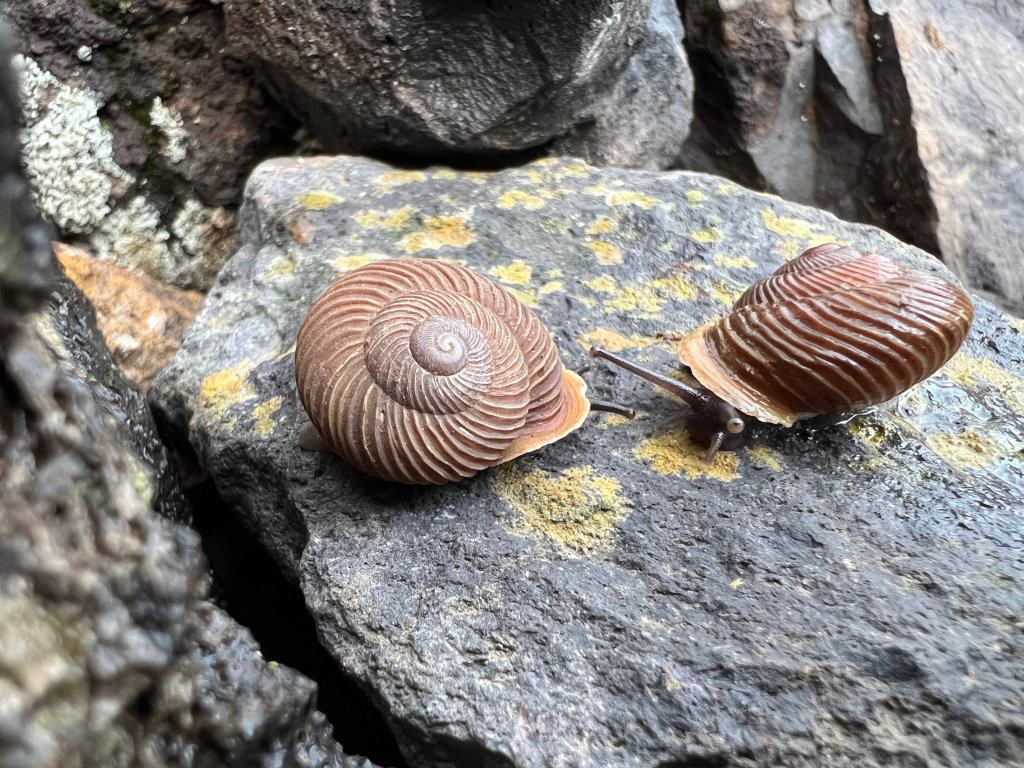The joint efforts of Loro Parque Fundación and the CanBIO project have been key to updating the conservation status of these species.
The Canary Islands have managed to reduce the number of critically endangered endemic snails, thanks to the coordinated efforts of the Macaronesia Species Survival Center of Loro Parque Fundación, the International Union for Conservation of Nature (IUCN), the University of La Laguna, and the CanBIO project, co-financed by Loro Parque Fundación and the Government of the Canary Islands.
After more than a decade without updated data, over thirty endemic land snail species of the archipelago have been re-evaluated. This work has provided key data on the current status of these species, allowing some of them to be reclassified into lower threat categories according to the IUCN Red List. This is the case of species such as Hemicycla mascaensis in Tenerife, which has been reclassified from critically endangered (CR) to near threatened (NT), and Monilearia arguineguinensis in Gran Canaria, now endangered (EN)
Javier Almunia, Director of Loro Parque Fundación, stressed that ‘the updated information obtained thanks to this joint effort is crucial for the effective conservation of these highly vulnerable species. International and local collaboration has significantly improved our knowledge and allowed us to adjust the measures needed to protect these endemic snails.’
However, Almunia also expressed concern about the overall situation, as several species remain critically endangered or possibly extinct, highlighting the importance of continuing with effective and specific conservation measures. ‘There is still much to be done, and although the progress is encouraging, we must intensify our efforts to prevent the definitive loss of these unique species,’ he added.
By islands, Gran Canaria re-evaluated the most species (11), followed by La Gomera (9), Tenerife (7), and La Palma (3). Among the most significant findings are the creation of new distribution maps and the rediscovery of populations that had not been seen in decades.
The next step of the project is to draft conservation recommendations for the Canary Islands Government, aimed at effectively protecting these species in the future. Overall, the net balance is positive, as the number of land snails in the Canary Islands classified as Critically Endangered has decreased by two species, from 30 to 28.
Conserving the biodiversity of land snails remains an urgent task for the Canary Islands – a scientific commitment and a shared responsibility for the archipelago’s natural heritage.
Summary description by island:
Tenerife: Of the seven species assessed, one has improved (H. mascaensis, now NT) and the others remain CR, with threats such as urbanisation, invasive species and stochastic events. H. modesta, N. teobaldoi and I. reticulata stand out for their extremely restricted distribution. C. engonatus has not been redetected since 1852 and is considered possibly extinct.
Gran Canaria: Ten species were reviewed; two were downgraded (M. arguineguinensis to EN and N. arinagaensis to VU), while eight remain CR due to their small distribution and threats such as military activities, urbanisation and habitat fragmentation. I. machadoi and C. tamaranensis are probably extinct.
La Palma: Three species were assessed. V. festinans has been upgraded to VU after new populations were found. The other two (C. putrescens and J. pompylus) have not been detected since the 19th century and are still considered possibly extinct.
La Gomera: Of nine species reviewed, two have been downgraded (C. ronceroi to VU and H. efferata to NT), while others have been downgraded, such as H. gomerensis and N. ocellatus, now CR. New threats have been confirmed, such as predation by invasive snails and habitat loss. C. gomerensis remains CR, possibly extinct.


